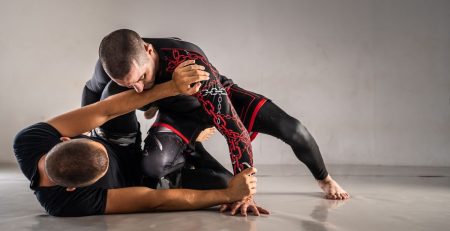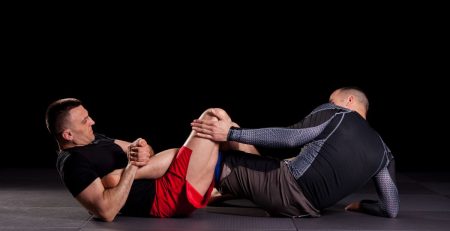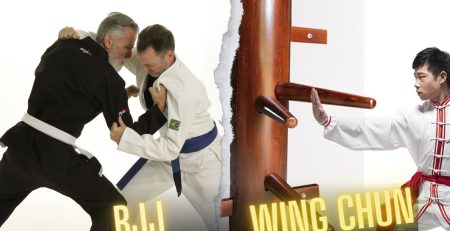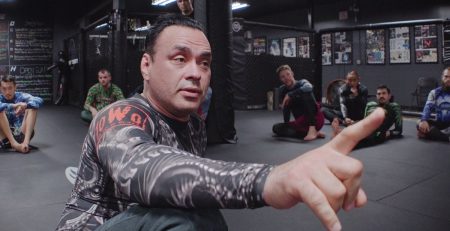How Much Are Brazilian Jiu Jitsu Classes?
Table of Contents:
- Introduction
- Understanding Brazilian Jiu-Jitsu Classes
- Factors Affecting the Cost of Brazilian Jiu-Jitsu Classes
- Average Cost of Brazilian Jiu-Jitsu Classes Worldwide
- Additional Costs and Considerations
- Tips for Choosing a Brazilian Jiu-Jitsu School
- Conclusion
Introduction
Brazilian Jiu-Jitsu (BJJ) has gained immense popularity worldwide for its effectiveness as a martial art and its focus on grappling and ground fighting techniques. However, for many prospective practitioners, one of the primary concerns is understanding the cost associated with Brazilian Jiu-Jitsu classes. In this comprehensive guide, we delve into the various factors that influence the cost of BJJ classes, average pricing globally, additional expenses, and essential considerations for selecting the right BJJ school.
Understanding Brazilian Jiu-Jitsu Classes
Before diving into the cost aspect, it’s crucial to understand what Brazilian Jiu-Jitsu classes entail. BJJ classes typically involve instruction in various techniques, drills, sparring sessions, and sometimes supplementary training such as strength and conditioning. Classes are usually conducted in specialized facilities known as dojos or academies, led by experienced instructors ranging from black belts to lower ranks, depending on the school’s structure.
Brazilian Jiu-Jitsu is not just a physical activity but a holistic martial art that emphasizes discipline, respect, and mental fortitude. Classes often begin with warm-up exercises to prepare the body for training, followed by instruction in specific techniques such as submissions, escapes, sweeps, and takedowns. Students then have the opportunity to practice these techniques with partners through controlled sparring sessions known as rolling. The focus on live grappling sets BJJ apart from many other martial arts, as it allows practitioners to test their skills in realistic scenarios while developing timing, strategy, and adaptability. Additionally, to discover the top Brazilian Jiu-Jitsu schools, take a look at this article Top Brazilian Jiu Jitsu Schools.
In addition to the physical benefits of Brazilian Jiu-Jitsu, such as improved strength, flexibility, and cardiovascular endurance, classes also offer mental and emotional rewards. Many practitioners find that BJJ provides an outlet for stress relief, mental focus, and personal growth. The camaraderie and sense of community fostered in BJJ academies create a supportive environment where students can learn, grow, and challenge themselves both on and off the mats.
Factors Affecting the Cost of Brazilian Jiu-Jitsu Classes
Several factors influence the pricing of Brazilian Jiu-Jitsu classes. These include the location of the academy, the reputation and credentials of the instructors, the facilities and amenities offered, class frequency and duration, and any additional perks such as access to seminars or specialized workshops. Additionally, the cost of living in a particular area and the overall demand for BJJ training can impact pricing significantly.
Location plays a significant role in determining the cost of Brazilian Jiu-Jitsu classes, with schools in major metropolitan areas often charging higher fees due to higher operating costs. Similarly, academies located in affluent neighborhoods or regions with a strong BJJ community may command higher prices. The reputation and credentials of the instructors also play a crucial role, as academies led by highly regarded black belts or world-class competitors may justify higher fees based on their expertise and experience.
The facilities and amenities offered by a Brazilian Jiu-Jitsu academy can vary widely and may include features such as spacious training areas, locker rooms, showers, and additional training equipment. Schools that invest in state-of-the-art facilities and maintain a high standard of cleanliness and professionalism may charge higher fees to cover these expenses. Additionally, academies that offer a wide range of classes, including beginner, advanced, and specialized programs, may provide added value for students seeking comprehensive training options.
Class frequency and duration are essential considerations when determining the cost of Brazilian Jiu-Jitsu classes. Some academies offer unlimited training options, allowing students to attend as many classes as they wish each week for a flat monthly fee. Others may have tiered membership plans based on the number of classes attended or offer drop-in rates for individual sessions. The duration of each class can also vary, with some academies offering hour-long sessions while others may extend to 90 minutes or more. Longer classes may provide more time for instruction, drilling, and sparring, but they may also incur higher fees to cover increased instructor and facility costs. If you’re interested in learning about Brazilian Jiu-Jitsu training, you can read more in this article Brazilian Jiu Jitsu Training.
Additional perks and benefits can add value to Brazilian Jiu-Jitsu classes and may justify higher pricing. These may include access to special events such as seminars with visiting black belt instructors, workshops on specific techniques or topics, and social activities like team outings or competitions. Some academies may also offer discounts or incentives for members who refer new students or participate in fundraising efforts for charitable causes. These extras can enhance the overall training experience and create a sense of community and belonging among students.
Evaluating the Cost-Effectiveness of Brazilian Jiu-Jitsu Classes
While the cost of Brazilian Jiu-Jitsu classes may seem daunting at first glance, it’s essential to consider the value and benefits they provide. BJJ offers a unique combination of physical fitness, self-defense skills, mental discipline, and social connection that can enrich every aspect of your life. When evaluating the cost-effectiveness of BJJ training, it’s crucial to weigh the tangible benefits such as improved health and fitness against the financial investment required.
One way to maximize the value of Brazilian Jiu-Jitsu classes is to take advantage of any discounts or promotions offered by academies. Many schools offer introductory specials or discounted rates for students, military personnel, and first responders. Additionally, some academies may provide incentives for signing up for long-term membership contracts or paying for classes in advance. By taking advantage of these cost-saving opportunities, you can make BJJ training more affordable while still reaping the benefits of consistent practice. For more information about the best Brazilian Jiu-Jitsu fighters, you can check out this article Best Brazilian JiuJitsu Fighter.
Another consideration when evaluating the cost-effectiveness of BJJ classes is to assess the quality of instruction and training provided. While price can be a factor in choosing a BJJ academy, it’s essential to prioritize factors such as instructor experience, teaching style, and curriculum quality. Look for academies with knowledgeable and supportive instructors who are invested in their students’ progress and development. Additionally, consider the training environment, class sizes, and student demographics to ensure that you’ll receive the personalized attention and instruction you need to succeed.
Conclusion
In conclusion, the cost of Brazilian Jiu-Jitsu classes can vary depending on a variety of factors, including location, instructor credentials, facilities, class frequency, and additional perks. While BJJ training may require a financial investment, the benefits it offers in terms of physical fitness, self-defense skills, mental discipline, and social connection are invaluable. By carefully evaluating the cost-effectiveness of BJJ classes and prioritizing quality instruction and training, you can make the most of your martial arts journey and reap the rewards for years to come.
FAQs Related to Brazilian Jiu-Jitsu Classes
Q1. How much do Brazilian Jiu-Jitsu classes typically cost?
A: The cost of Brazilian Jiu-Jitsu classes can vary widely depending on factors such as location, instructor credentials, and class frequency. On average, monthly membership fees range from $100 to $200, with additional expenses for uniforms, equipment, and other optional perks.
Q2. What factors influence the cost of Brazilian Jiu-Jitsu classes?
A: Several factors can influence the cost of Brazilian Jiu-Jitsu classes, including the reputation and experience of the instructors, the quality of the facilities, the frequency and duration of classes, and any additional perks or benefits offered by the academy.
Q3. Are Brazilian Jiu-Jitsu classes worth the investment?
A: While Brazilian Jiu-Jitsu classes may require a financial investment, many students find them to be well worth the cost. BJJ offers numerous benefits, including improved physical fitness, self-defense skills, mental discipline, and social connection, making it a valuable investment in both health and personal development.
Q4. Are there any discounts or promotions available for Brazilian Jiu-Jitsu classes?
A: Many Brazilian Jiu-Jitsu academies offer discounts or promotions for new students, as well as special rates for students, military personnel, and first responders. Additionally, some academies may provide incentives for signing up for long-term membership contracts or paying for classes in advance.
Q5. How can I assess the quality of Brazilian Jiu-Jitsu classes before enrolling?
A: Before enrolling in Brazilian Jiu-Jitsu classes, it’s essential to research the academy thoroughly. Look for reviews and testimonials from current and former students, visit the academy in person to observe a class, and speak with the instructors to assess their experience, teaching style, and commitment to student success.
Q6. Are there any hidden costs associated with Brazilian Jiu-Jitsu classes?
A: While the monthly membership fee is the most significant cost associated with Brazilian Jiu-Jitsu classes, there may be additional expenses for uniforms, equipment, belt testing fees, and optional perks such as seminars or social events. It’s essential to inquire about any potential hidden costs before enrolling in classes.
Q7. Can I try Brazilian Jiu-Jitsu classes before committing to a membership?
A: Many Brazilian Jiu-Jitsu academies offer free trial classes or introductory sessions to allow prospective students to experience the training environment and teaching style before committing to a membership. This is an excellent opportunity to determine if the academy is the right fit for your goals and preferences.
Q8. How often should I attend Brazilian Jiu-Jitsu classes?
A: The frequency of attendance in Brazilian Jiu-Jitsu classes depends on your schedule, goals, and level of commitment. Most academies offer classes multiple times per week, and consistent attendance is essential for skill development and progress. However, it’s essential to listen to your body and avoid overtraining to prevent injury.
Q9. What should I wear to Brazilian Jiu-Jitsu classes?
A: For Brazilian Jiu-Jitsu classes, you’ll typically wear a gi (uniform) consisting of a jacket, pants, and belt. Some academies also offer no-gi classes where you can wear rash guards and grappling shorts. It’s essential to check with your academy for specific dress code requirements and recommendations for beginners.
Q10. Is Brazilian Jiu-Jitsu suitable for all ages and fitness levels?
A: Yes, Brazilian Jiu-Jitsu is suitable for people of all ages and fitness levels. Classes are typically divided into beginner, intermediate, and advanced levels to accommodate students’ skill levels and experience. Regardless of your starting point, Brazilian Jiu-Jitsu offers a supportive and inclusive environment for learning and growth.
Q11. How can I progress in Brazilian Jiu-Jitsu?
A: Progression in Brazilian Jiu-Jitsu is measured through the belt system, which includes white, blue, purple, brown, and black belts. Advancement through the belts requires consistent training, dedication, and demonstration of technical proficiency and understanding of BJJ principles. In addition to regular classes, students may participate in belt tests and competitions to demonstrate their skills and progress.
Q12. Are there any health or safety considerations for Brazilian Jiu-Jitsu classes?
A: While Brazilian Jiu-Jitsu is generally safe when practiced correctly, there is a risk of injury associated with any physical activity. It’s essential to listen to your body, warm up properly before training, and follow the instructor’s guidance to minimize the risk of injury. Additionally, maintaining good hygiene, such as washing your gi regularly and keeping your nails trimmed, can help prevent the spread of germs and skin infections.















Leave a Reply
You must be logged in to post a comment.